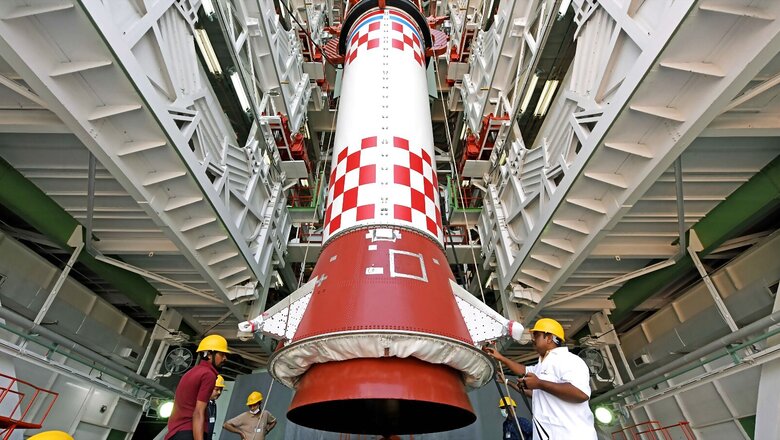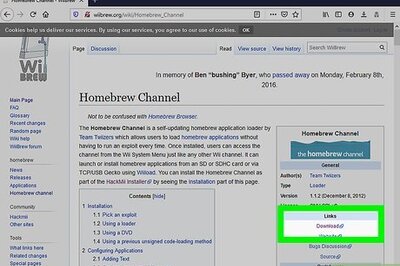
views
On the morning of August 7, as ISRO’s Small Satellite Launch Vehicle (SSLV) leaves for its maiden spaceflight from Sriharikota, hundreds of girls who travelled from villages across states will be watching with anticipation as the rocket lifts off and rises into the sky before disappearing.
But more than just being a witness to the scientific feat, SSLV D-1 will mark the culmination of a project that the students began six-months ago. Aboard the spacecraft will be AzaadiSAT, an 8-kg microsatellite carrying 75 small payloads developed by this all-girls team from 75 rural schools across India.
If all goes as planned, the small rocket will separate from EOS-02, the experimental earth imaging satellite, 12.3 minutes after its scheduled launch from Satish Dhawan Space in Sriharikota at 9:18am. Exactly a minute later, at an altitude of 356 km from Earth, it will part with AzaadiSAT which will get injected into the Lower Earth Orbit (LEO).
Flight of Freedom
“It is no less than a flight of freedom for these girls. It’s the first time a space-related project built by them in their class will actually go into space and collect data,” said Srimathy Kesan, founder-CEO of Space Kidz India (SKI), highlighting how the students braved pandemic-induced challenges and internet hassles to be a part of the project. “Many of them weren’t even getting permission from their families to come to Sriharikota to witness the launch.”

The Chennai-based organisation, which led the work on AzaadoSAT along with NITI Aayog, works with high school students to develop basic experiments that they can learn and assemble with support from their teachers. For the mission, they had selected 10 girls each (Classes 8 to 10) from 75 schools across India, and tutored them to build the small experiments that were later integrated into a satellite.
The main systems, including the onboard computer, flight software, electrical power system, telemetry and tele-command were developed and tested by the SKI.
Jana Gana Mana in Space
The mission will also mark 75 years of India’s Independence, with the participation of 75 schools across states. Kesan told News18 that AzaadiSAT will also carry a recorded version of the national anthem sung by Rabindranath Tagore which they plan to play in space to pay tribute to the country. Another ‘space song’ prepared specially for the occasion will be released on the day of the launch.

In the past, astronauts have carried song recordings and musical instruments with them on space missions, and even played renditions of iconic songs, and recorded them. However, unlike a crewed spacecraft which is filled with air (under prescribed pressure), and allows sound waves to travel, the outer space offers no such medium. In the absence of air, sound waves cannot travel in outer space, and it may not be possible to hear anything.
75 Experiments in Space
With all arrangements in place and the mission set for launch on Sunday, Kesan said the goal will be to establish successful ground communication as soon as the satellite reaches orbit, and keep a stable connection to collect any data.
A key aim of AzaadiSAT will be to demonstrate the LoRA (long-range radio) transponder for creating space-based LoRA gateway. While for this mission, it will mostly be used for amateur radio communication, LoRA can eventually be useful in connecting important devices like sea buoys, tsunami buoys, and landslide monitoring sensors.
Apart from that, it will demonstrate the indigenous nano-satellite subsystems built by students. The satellite also includes a radiation counter to measure the ionising radiations, and study their effect on the sub-systems if any. There will also be a selfie camera onboard to take pictures of the satellite and send it back to earth. According to the team, this could help in studying the impact of solar winds on the surface of the satellite and solar panels.
Eye on Commercial Space Market
The 34-metre tall new launch vehicle that will send the two experimental satellites into space on Sunday is India’s answer to the growing commercial satellite market that thrives on launch-on-demand capabilities. According to ISRO, SSLV can launch mini, micro and nano satellites weighing anywhere between 10-500 kg to 500 km planar orbit. It is low-cost with low turnaround time, flexible in accommodating multiple satellites with launch on-demand feasibility, and requires minimal launch infrastructure requirements – crucial for speeding up the commercial missions in near-future.
Read the Latest News and Breaking News here
















Comments
0 comment